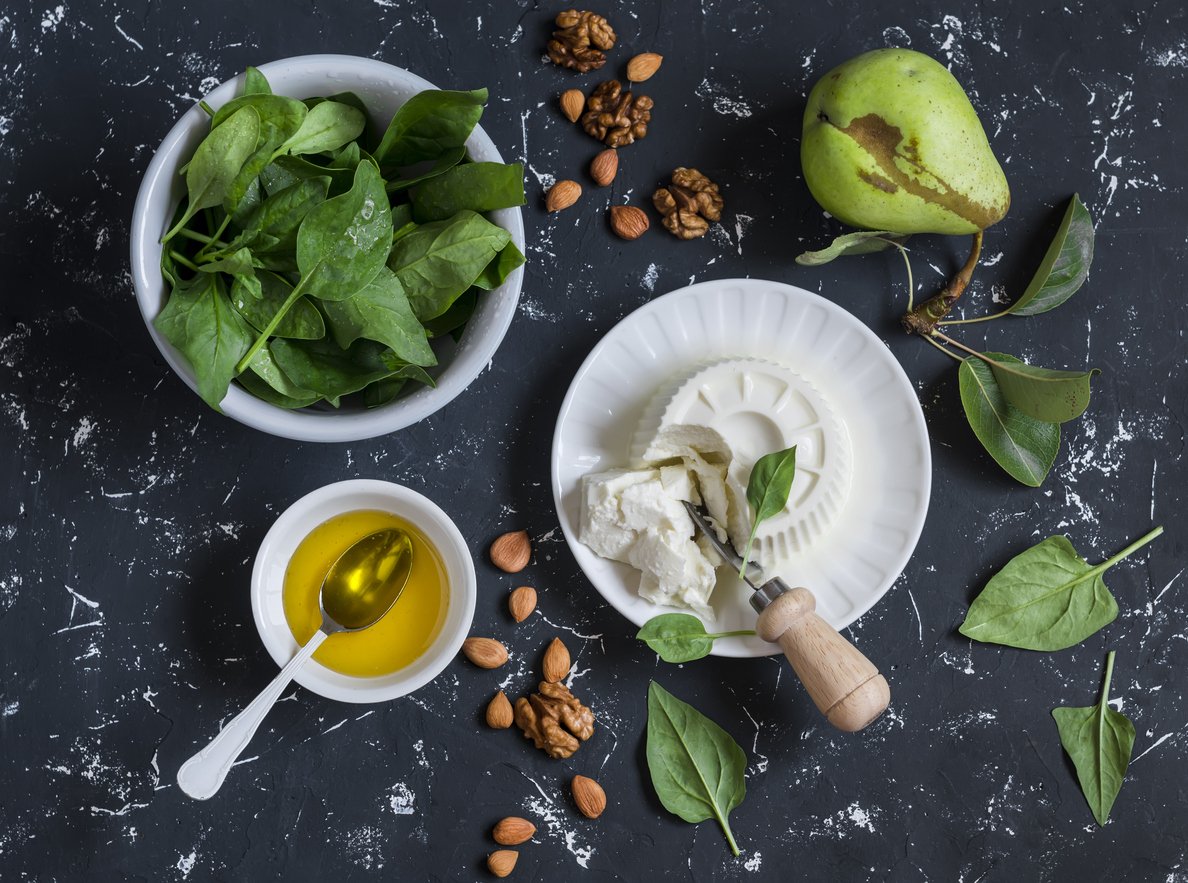Spinach is a true “Superfood” in my opinion. It’s even ranked as one of the healthiest vegetables. Kale may be getting all the attention lately, but spinach is a real contender, and for good reasons. This bright green leafy is a nutritional powerhouse packed with vitamins, minerals, antioxidants and an abundant amount of disease-preventing phytochemicals.
Spinach is an excellent source of vitamins A, C, E, K, and minerals such as calcium, manganese, folate, magnesium, copper, and potassium. Not to mention it’s rich in iron, an essential mineral that transports oxygen throughout the body. Spinach contains dietary fiber, important in regulating digestive health. And to top it off, there are only 25 calories in 3 cups of raw spinach!
Health Benefits of Spinach
Cancer Protection
Spinach is one of the vegetables with the highest antioxidant content. Antioxidants protect cells against free radical damage that can potentially lead to cancer. Glutathione and alpha-lipoic acid are 2 major antioxidants found in spinach that help ward off damage caused by free radicals. Additionally, phytochemicals in spinach protect against proliferation of cancer cells [ii][iii].
Eye Health
Two important carotenoids, lutein and zeaxanthin, protect the retina from free radical damage and eye diseases such as cataracts and age-related macular degeneration. Studies have shown that consumption of 6.9 mg a day may be beneficial in preventing macular degeneration. Eating just 2 cups of raw spinach provides over 7 mg of lutein and zeaxanthin. These carotenoids coupled with the vitamin A in spinach helps support the maintenance of healthy eyes and vision [i].
Cardiovascular Health
There are multiple compounds in spinach that play a role in maintaining a healthy heart. Potassium and magnesium are responsible for lowering blood pressure, and reduces the risk of developing cardiovascular disease. Folate plays a role in protecting the body against the amino acid homocysteine, which promotes atherosclerosis by damaging blood vessels and causing blood clots. High levels of homocysteine are known risk factors for cardiovascular disease and stroke. Spinach consumption has also been associated with decreased risk of atherosclerosis [ii][iii].
Bone Health
Spinach is loaded with vitamin K, which may help increase bone mineral density in individuals with osteoporosis and reduce the risk of bone fracture. This green leafy is also a good source of nutrients such as calcium and magnesium that build and maintain strong bones and teeth [iv].
How to use it
Spinach can be found fresh, frozen, or canned. It’s even available pre-washed and packaged for added convenience. When purchasing fresh spinach, choose ones with bright green tender leaves. Avoid those that are yellow, bruised, wilted, or have a slimy coat as these are signs of decay. Spinach should only be washed prior to using to maintain freshness. When kept in an airtight plastic bag, it can be stored safely in the refrigerator for 2-3 days.
I have to admit, spinach is one of my all time favorite green leafy vegetable. It’s mild in flavor making it versatile enough for a number of different dishes. You can easily add them to sandwiches, pastas, or soups. I like to blend them into breakfast smoothies for a nutritional boost (trust me, you can’t taste the spinach!), toss them into salads, and sauté in garlic and extra virgin olive oil for a simple side dish. Here’s a delicious recipe for fall that not only highlights fresh spinach and seasonal produce, but it’s easy to prepare. I already know this salad will definitely be served at my upcoming Thanksgiving dinner!


- 3 Anjou, Bosc or Comice pears
- ¼ cup extra-virgin olive oil
- ¼ cup white wine vinegar
- 1 Tbsp German mustard
- 1 tsp honey
- ¾ lb spinach, torn into bite-size pieces
- ½ red onion, thinly sliced
- ½ cup walnuts, toasted
- 4 oz goat cheese, crumbled
- Chop 1 pear and slice the remaining two. Put chopped pear, oil, vinegar, mustard and honey into a blender and purée. Transfer to a small bowl and stir in 2 tablespoons water, more if needed, to thin for a pourable dressing. Put spinach, onion, walnuts, goat cheese, sliced pears and dressing into a large bowl and toss gently to coat. Serve immediately.
